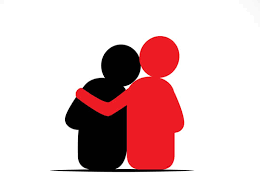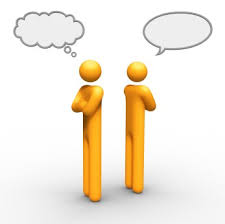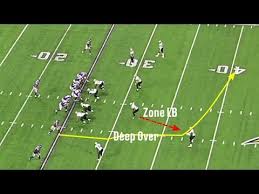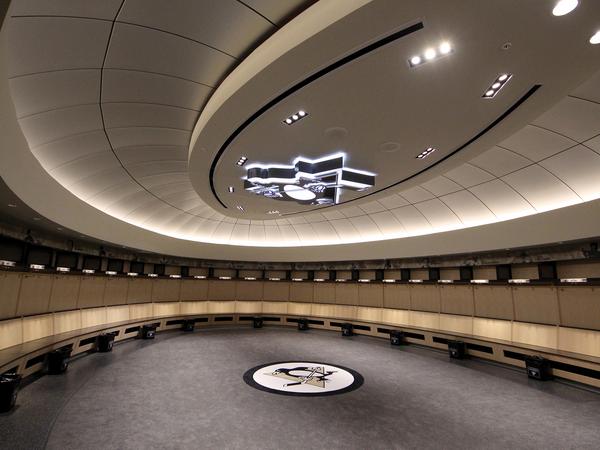 Like so many, I’ve been troubled by recent events sparked by the killing of George Floyd. There are many layers to process to make sense of this – social, economic, historical, legal, political, and emotional. I’d like to discuss the role of emotions. I do not know too many people anywhere who took a class on emotions, labeling emotions correctly, understanding exactly what they are, where they come from, and most importantly the impact they have on our thoughts. I have argued in many of my books and speeches that emotions are really the singular currency of human interaction and understanding. It is hard to understand something when angry, and not because our IQ suddenly dropped but because of the power of that emotion.
Like so many, I’ve been troubled by recent events sparked by the killing of George Floyd. There are many layers to process to make sense of this – social, economic, historical, legal, political, and emotional. I’d like to discuss the role of emotions. I do not know too many people anywhere who took a class on emotions, labeling emotions correctly, understanding exactly what they are, where they come from, and most importantly the impact they have on our thoughts. I have argued in many of my books and speeches that emotions are really the singular currency of human interaction and understanding. It is hard to understand something when angry, and not because our IQ suddenly dropped but because of the power of that emotion.
Our bodies are 90% fluid. We are in effect a chemical factory. So clearly, the impact of chemicals in our bodies and brains is enormous and can over-ride cognitive function. Emotions are the condition of chemicals (hormones) in our body. These chemicals are released by glands in our brain based on the stimuli it receives. Here is the kicker though – in order for the brain to understand a stimuli, it does not google an objective library for facts. It goes only to its own library of experiences and based almost entirely on that, chemicals are released. So emotional responses are not conscious, logical – they occur long before our conscious is activated. The brain is designed to do so. Certain chemicals released impact other glands and organs. Watching kids play in a park or a beautiful sunset releases chemicals that “make us relax, happy.” Watching a human being get killed releases different chemicals, again based on each brain’s own library. For some, it has been ‘sickening, traumatizing, stressful’ and for others it may be less of that. The latter brains may even have other experiences in their library that justify what happened. Make no mistake, our emotional responses are not based on an objective universal scale. Empathy is therefore a key skill, and the most important skill, in human experience – it is the highest of the emotional currency. If we can ‘feel’ what others’ feel without having experienced what they felt, that is a power and gift of enormous value, currency.
Purely from an emotional lens, and as someone who has written 8 books on this, countless blogs, speeches, and tweets (@izzyjustice) – at a daily actionable level, we all need to make an effort to understand the experience of someone different from us. You can do this by talking to people racially, economically, politically, and any other form of difference. If this is uncomfortable or not possible (with social distancing), then simply go to youtube and search for stories of different human experiences than yours, search for blogs, books, podcasts etc. It can be hard to hear the perspective of someone who has values so different from yours but you will need to remember, that person will never change unless someone or some experience disproves those values. Be that person. There has never been a better time to be that person. Suspend logic and use the universal emotional currency we all seek – safety, happiness, and good health.

 I understand many are struggling with the death of Kobe Bryant. Here is my take on it that I hope will help understand what/why we are feeling now.
I understand many are struggling with the death of Kobe Bryant. Here is my take on it that I hope will help understand what/why we are feeling now. Those of you who have been reading my blogs the past 10 years know I do not use studies that do not employ scientific methods and peer-reviewed. In an alarming new finding by neuroscientists, it turns out that our brain is processing experiences via monologues (self talk, self analysis, self judgment) about 80-95% of the time. The rest is time spent in human interaction and dialogue, in person or electronically (connecting with others). The latter can be 2-way (actual back and forth communication) or 1-way (reading social/other media). These monologues continue while we sleep too. I proceeded to google search training resources on how to help people communicate (dialogue) with others. Millions of resources came up, quite literally, from how to communicate with children, with spouses, in sales, at work, in presentations …. endless. I found hardly any on how to communicate with yourself, how to conduct monologues so that they are the kind that are productive, nurturing, critical and growth oriented. In other words, we have resources for about 5-20% of what our brain consciously does and not the 80-95% of what it does subconsciously. For high performers, leaders, athletes, and coaches, consider learning/teaching to conduct healthy monologues, a game-changer.
Those of you who have been reading my blogs the past 10 years know I do not use studies that do not employ scientific methods and peer-reviewed. In an alarming new finding by neuroscientists, it turns out that our brain is processing experiences via monologues (self talk, self analysis, self judgment) about 80-95% of the time. The rest is time spent in human interaction and dialogue, in person or electronically (connecting with others). The latter can be 2-way (actual back and forth communication) or 1-way (reading social/other media). These monologues continue while we sleep too. I proceeded to google search training resources on how to help people communicate (dialogue) with others. Millions of resources came up, quite literally, from how to communicate with children, with spouses, in sales, at work, in presentations …. endless. I found hardly any on how to communicate with yourself, how to conduct monologues so that they are the kind that are productive, nurturing, critical and growth oriented. In other words, we have resources for about 5-20% of what our brain consciously does and not the 80-95% of what it does subconsciously. For high performers, leaders, athletes, and coaches, consider learning/teaching to conduct healthy monologues, a game-changer. Human error is a leading cause of death in healthcare. Some studies show about 200 deaths in the US per day because of medical errors, though it is not clear how many of them are caused by good clinicians who make the wrong decision versus other types of medical errors. I wrote a book (Healthcare EQ) inventorying the ’emotional cost’ to the clinician of each patient interaction labeling ’emotional fatigue’ as a cause in performing sub-optimally. If you run every single red traffic light on your way to work, it could be deduced that you would show up to work a little more ’emotionally exhausted’ than if you hit all green traffic lights on the same route. Extending this example to patient interaction, if patients seen earlier in the day require more emotionally, it could also be deduced that patients in the afternoon might see a more fatigued clinician. We captured some of this first hand in the book. It led to a meme that asked,”What time did you leave work?” with the answer being “5PM is when I drove home but 2PM is when I emotionally quit.” I see this in athletes too. If an adverse event occurs at a point in the competition, it is hard for some athletes to recover and they ’emotionally quit’ before the game is over. Traditional workplace is no different.
Human error is a leading cause of death in healthcare. Some studies show about 200 deaths in the US per day because of medical errors, though it is not clear how many of them are caused by good clinicians who make the wrong decision versus other types of medical errors. I wrote a book (Healthcare EQ) inventorying the ’emotional cost’ to the clinician of each patient interaction labeling ’emotional fatigue’ as a cause in performing sub-optimally. If you run every single red traffic light on your way to work, it could be deduced that you would show up to work a little more ’emotionally exhausted’ than if you hit all green traffic lights on the same route. Extending this example to patient interaction, if patients seen earlier in the day require more emotionally, it could also be deduced that patients in the afternoon might see a more fatigued clinician. We captured some of this first hand in the book. It led to a meme that asked,”What time did you leave work?” with the answer being “5PM is when I drove home but 2PM is when I emotionally quit.” I see this in athletes too. If an adverse event occurs at a point in the competition, it is hard for some athletes to recover and they ’emotionally quit’ before the game is over. Traditional workplace is no different.
 Which organization does not have a well-crafted Mission and Vision statement? Which CEO or leadership team does not espouse core values? Which leader cannot get up in front of an audience with an hour’s notice and speak to what leadership means and how to treat others? I frankly do not know of too many that cannot do this. If I changed these questions to “which organization/leader PRACTICES” their values, the list is regrettably quite short. Recently, as a season ticket-holder for Charlotte’s NBA team, the Hornets, I had a regrettable negative incident with my 12 year old son during a game from one of the employees. I wrote Fred Whitfield, President of the Hornets, and shared my concerns. He conducted an internal investigation that validated my version. Neither my son nor I wanted to return to watch any more games. Fred wrote me, called me, and personally apologized. I was humbled by the friendly call and sincerity of the conversation. My son, however, still did not want to return as he took the incident personally and was fearful of it recurring. What ensued was a Values-Based approach to resolving an emotionally charged experience. Fred invited Hunter and I to his office before a game so he could speak directly to my son and share similar childhood experiences. He brought in his senior staff to say hello to my son, and then told us an amazing story that could be life-changing for my son. He shared his own personal childhood of negative incidents, how his Dad told him that if he walked away from something he loved to do because someone else treated him poorly, then in effect, that person won. The best response would actually be to follow that passion more and become successful. Success, he shared, was the best response. After the wonderful talk, Fred allowed my son and I to sit court-side and his staff showered us with much love and respect.
Which organization does not have a well-crafted Mission and Vision statement? Which CEO or leadership team does not espouse core values? Which leader cannot get up in front of an audience with an hour’s notice and speak to what leadership means and how to treat others? I frankly do not know of too many that cannot do this. If I changed these questions to “which organization/leader PRACTICES” their values, the list is regrettably quite short. Recently, as a season ticket-holder for Charlotte’s NBA team, the Hornets, I had a regrettable negative incident with my 12 year old son during a game from one of the employees. I wrote Fred Whitfield, President of the Hornets, and shared my concerns. He conducted an internal investigation that validated my version. Neither my son nor I wanted to return to watch any more games. Fred wrote me, called me, and personally apologized. I was humbled by the friendly call and sincerity of the conversation. My son, however, still did not want to return as he took the incident personally and was fearful of it recurring. What ensued was a Values-Based approach to resolving an emotionally charged experience. Fred invited Hunter and I to his office before a game so he could speak directly to my son and share similar childhood experiences. He brought in his senior staff to say hello to my son, and then told us an amazing story that could be life-changing for my son. He shared his own personal childhood of negative incidents, how his Dad told him that if he walked away from something he loved to do because someone else treated him poorly, then in effect, that person won. The best response would actually be to follow that passion more and become successful. Success, he shared, was the best response. After the wonderful talk, Fred allowed my son and I to sit court-side and his staff showered us with much love and respect. I’ve argued for a while now that the only output worth measuring organizationally for employees is their innovation, defined as a spectrum of performance from “status quo on the left to better in the middle to game-changer on the far right.” Yes, we need to have goals to aim for, but these are usually easy to come up with. If in sales, and you sold $1MM last year, it is relatively easy to conjure a target of north of $1MM this year and so on. What is infinitely harder is coming up with the plan or process to achieve whatever goal is set. What are the chances that you will achieve a higher goal if you used the same process as you did last year? That is, if you did things on the left side of the innovation spectrum, near the status quo marker. I do not know the answer to that but surely, it would be lower than if you did things more in the middle (better) or right of middle (towards game-changer). When coaching athletes, we make the distinction between process goals and outcome goals. Which athlete does not want to win or score the most goals? Not one. By focusing on the goal, and not what it takes to achieve the goal, athletes usually under-perform.
I’ve argued for a while now that the only output worth measuring organizationally for employees is their innovation, defined as a spectrum of performance from “status quo on the left to better in the middle to game-changer on the far right.” Yes, we need to have goals to aim for, but these are usually easy to come up with. If in sales, and you sold $1MM last year, it is relatively easy to conjure a target of north of $1MM this year and so on. What is infinitely harder is coming up with the plan or process to achieve whatever goal is set. What are the chances that you will achieve a higher goal if you used the same process as you did last year? That is, if you did things on the left side of the innovation spectrum, near the status quo marker. I do not know the answer to that but surely, it would be lower than if you did things more in the middle (better) or right of middle (towards game-changer). When coaching athletes, we make the distinction between process goals and outcome goals. Which athlete does not want to win or score the most goals? Not one. By focusing on the goal, and not what it takes to achieve the goal, athletes usually under-perform. There are many good questions to ask intermittently so long as you process them truthfully with unbiased corroboration and data. One of them is to process how much of what you know is outdated? Being outdated does not mean being wrong. I used to have a paper atlas in my car growing up to figure out directions when traveling. Today I use an app in my car that does the same thing, talks to me and alerts me to all kinds of information on my route. I could still use the atlas today. It would not be wrong, but it would be outdated. Why would I not use a more current tool to make me more efficient and better at meeting my goals?
There are many good questions to ask intermittently so long as you process them truthfully with unbiased corroboration and data. One of them is to process how much of what you know is outdated? Being outdated does not mean being wrong. I used to have a paper atlas in my car growing up to figure out directions when traveling. Today I use an app in my car that does the same thing, talks to me and alerts me to all kinds of information on my route. I could still use the atlas today. It would not be wrong, but it would be outdated. Why would I not use a more current tool to make me more efficient and better at meeting my goals? We all know what ‘happy hour’ is. That time of day after work to meet up at a bar/restaurant and have a few drinks, usually on a Friday afternoon. As we begin a new year in which we are more connected than ever, where there will be no shortage of reasons to not be online 24/7, where there will be more distractions and challenges, let me propose a new ‘happy hour’ model. I actually like the term ‘happy hour’ even though it seems more like a ‘social hour’ and little to do with ‘happiness.’ What if happy hour were actually a happy hour?
We all know what ‘happy hour’ is. That time of day after work to meet up at a bar/restaurant and have a few drinks, usually on a Friday afternoon. As we begin a new year in which we are more connected than ever, where there will be no shortage of reasons to not be online 24/7, where there will be more distractions and challenges, let me propose a new ‘happy hour’ model. I actually like the term ‘happy hour’ even though it seems more like a ‘social hour’ and little to do with ‘happiness.’ What if happy hour were actually a happy hour? The way I consumed music in my childhood was via the radio, a cassette player or a record (LP) player. I vividly recall consumption changing when it became possible to take music mobile with the walkman. Then CDs came along and eliminated the bulky nature of cassettes/LPs before digital music launched, making it even easier to consume music. Changes in the way we consume in one part of life has led to changes in the way we want to consume in other parts. We want consumption to be mobile, accessible, and tailored to our desires at any point in time. Consuming knowledge that can help us make better decisions should be no different.
The way I consumed music in my childhood was via the radio, a cassette player or a record (LP) player. I vividly recall consumption changing when it became possible to take music mobile with the walkman. Then CDs came along and eliminated the bulky nature of cassettes/LPs before digital music launched, making it even easier to consume music. Changes in the way we consume in one part of life has led to changes in the way we want to consume in other parts. We want consumption to be mobile, accessible, and tailored to our desires at any point in time. Consuming knowledge that can help us make better decisions should be no different. As I’ve written about extensively, I enjoy my work with professional athletes as it allows me to draw many parallels to working professionals. Both are paid to perform to their best ability with the former being so in a microcosm of the performance time compared to the workplace where projects can take months if not years. One of the attributes of successful athletes and teams is film time. I am always impressed at the volume of video made during a game that is then spliced up per athlete or per play and processed for feedback. It is one thing for coaches or teammates to lament about their version of why something went well or not well, and another thing when the play can be viewed in film in hindsight processed objectively like evidence in legal court room. The same is done for opponents to help athletes prepare for who they will be playing against. The film room is a powerful learning forum.
As I’ve written about extensively, I enjoy my work with professional athletes as it allows me to draw many parallels to working professionals. Both are paid to perform to their best ability with the former being so in a microcosm of the performance time compared to the workplace where projects can take months if not years. One of the attributes of successful athletes and teams is film time. I am always impressed at the volume of video made during a game that is then spliced up per athlete or per play and processed for feedback. It is one thing for coaches or teammates to lament about their version of why something went well or not well, and another thing when the play can be viewed in film in hindsight processed objectively like evidence in legal court room. The same is done for opponents to help athletes prepare for who they will be playing against. The film room is a powerful learning forum. During a college soccer game I recently attended as a sport neuropschologist working for team X, I watched a player from team X kick the ball directly to an opposing player. I quickly scanned the entire field and both coaches/benches. There were multiple interpretations of that play. For the player who made the errand kick, his narrative appeared to be “oh crap. What did I just do?” For his teammates, it could have been anything from “no big deal” to “what an idiot!” to “Can’t believe he just did that.” For the X teammates on the bench, it ranged from “Common, get it back!” to “Coach needs to take him out.” For the X coaches, it could have been “Are you kidding me?” to “We practice those passes every day!” The X home team fans had a sudden gasp of sounds while opposing fans cheered! For the opposing player who got the pass, it was likely “Oh man! This is awesome!” For the opposing teammates, it was a sudden infusion of positive energy and for the opposing coaches I could hear “Let’s go!” chants as they starting running down the sidelines. So what’s the point here? One play by one player caused a vast array of interpretations and narratives. That play is permanently etched in history. However, the narratives of that play will live for much longer, consciously and subconsciously, more so on team X.
During a college soccer game I recently attended as a sport neuropschologist working for team X, I watched a player from team X kick the ball directly to an opposing player. I quickly scanned the entire field and both coaches/benches. There were multiple interpretations of that play. For the player who made the errand kick, his narrative appeared to be “oh crap. What did I just do?” For his teammates, it could have been anything from “no big deal” to “what an idiot!” to “Can’t believe he just did that.” For the X teammates on the bench, it ranged from “Common, get it back!” to “Coach needs to take him out.” For the X coaches, it could have been “Are you kidding me?” to “We practice those passes every day!” The X home team fans had a sudden gasp of sounds while opposing fans cheered! For the opposing player who got the pass, it was likely “Oh man! This is awesome!” For the opposing teammates, it was a sudden infusion of positive energy and for the opposing coaches I could hear “Let’s go!” chants as they starting running down the sidelines. So what’s the point here? One play by one player caused a vast array of interpretations and narratives. That play is permanently etched in history. However, the narratives of that play will live for much longer, consciously and subconsciously, more so on team X. Recently, I observed a head coach of a team yell at a player “What are you doing? Stay focused!” Her player had not being paying attention and the player she was guarding ran by her with the ball and scored. A day later in a business meeting, I observed a CEO tell one of his executives “These numbers are not good. Just go get it done!” Both the coach and CEO, leaders, were right in “what” they said. I call them “What” leaders, not to be confused with “how” leaders.
Recently, I observed a head coach of a team yell at a player “What are you doing? Stay focused!” Her player had not being paying attention and the player she was guarding ran by her with the ball and scored. A day later in a business meeting, I observed a CEO tell one of his executives “These numbers are not good. Just go get it done!” Both the coach and CEO, leaders, were right in “what” they said. I call them “What” leaders, not to be confused with “how” leaders.
